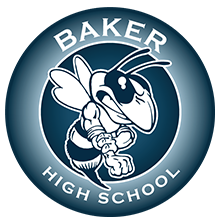AP Literature Summer Reading
Welcome to AP Literature! My name is Ms. Burns, and I am so excited for you to join me on this journey. Reading actively is important for developing analytical skills. Therefore, for summer reading, I ask that you read ONE of the following fiction novels:
● The Handmaid’s Tale by Margaret Atwood
● Pride and Prejudice by Jane Austen
● The Alchemist by Paulo Coelho
● 1984 by George Orwell
● The Hobbit by J.R.R.Tolkien
As you read your summer reading book, take notes in a two-column chart, also called a Quote/Note T-chart (see example on next page). This is also sometimes called a dialectical journal. Be sure to head your paper with your name and write the title of the work (underline or italicize novel titles) and the name of the novel's author. You will be responsible for TWENTY (handwritten or typed notes). These will be due the first week of class. Your notes should span the entire book (prove to me that you read it all) and should cover literary elements such as setting (including time period), characterization, conflict, plot (exposition, rising action, turning point, falling action, resolution, foreshadowing, stream of consciousness, flashback, etc.), theme(s), symbolism, and/or other literary elements (such as similes, metaphors, personification, tone, irony, juxtaposition, etc.). On the left side of the chart, you will have a quote from the book, the chapter, and page number. On the right side, you will explain why the quote is important, what underlying ideas or meanings it conveys, or any questions/insights it brings to mind.
Tips for collecting successful notes on the LEFT side of the T-chart:
1. Write down important quotes as you read. Your 20 notes should span the entire work.
2. Quote directly. Write down the quote exactly (using quotation marks). It is okay to use part of a
quote if it is long (see example on the next page); just use ellipses, if needed.
3. Record the chapter and page number(s) for each quote.
4. Identify what the quote SHOWS (implications of setting, time period, characterization, conflict,
foreshadowing, tone, mood, symbolism, theme or plot, etc .)
Tips for successful observations on the RIGHT side of the T-chart: Write down your thoughts about
the quote before you continue reading. Consider these types of responses.
a. Questions you might want to ask the teacher or author
b. Real-world connections
c. Things that remind you of another novel, story, movie, or TV show
d. Connections to your personal experiences
e. Thoughts about character complexity, changes, motivation, author's writing style, etc.
Please email me at dburns1@mcpss.com if you have any questions. I am looking forward to getting to know you guys as we embark on your senior year!
Quote
“The Bagginses had lived in the neighborhood of The Hill, and people considered them very respectable…but also because they never had any adventures or did anything unexpected…This is a story of how a Baggins had an adventure, and found himself doing and saying things altogether unexpected.” (Characterization, Ch. 1, page 2)
Note
The beginning of the book provides exposition of setting, which begins in Bilbo’s hobbit hole on The Hill, which seems comfortable and respectable, kind of like the character Bilbo. However, these details here also characterize Bilbo as a dynamic character who will defy expectations and possibly change. Therefore, these details also foreshadow the grand adventure Bilbo will take, how he may change, and what he may gain as a result.






